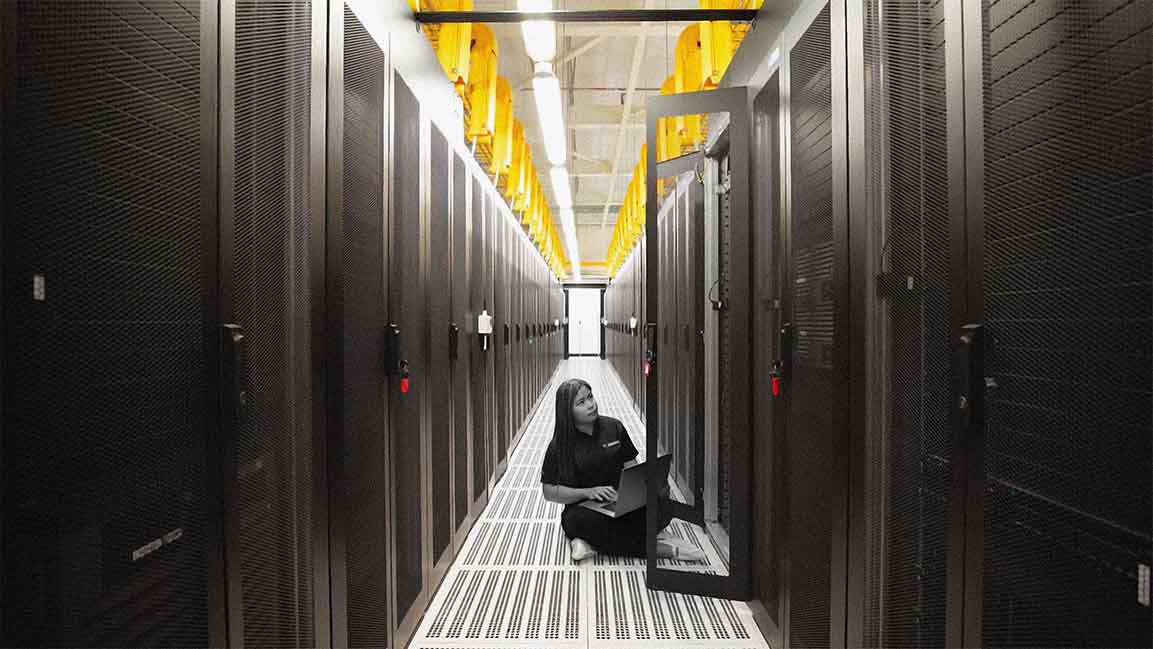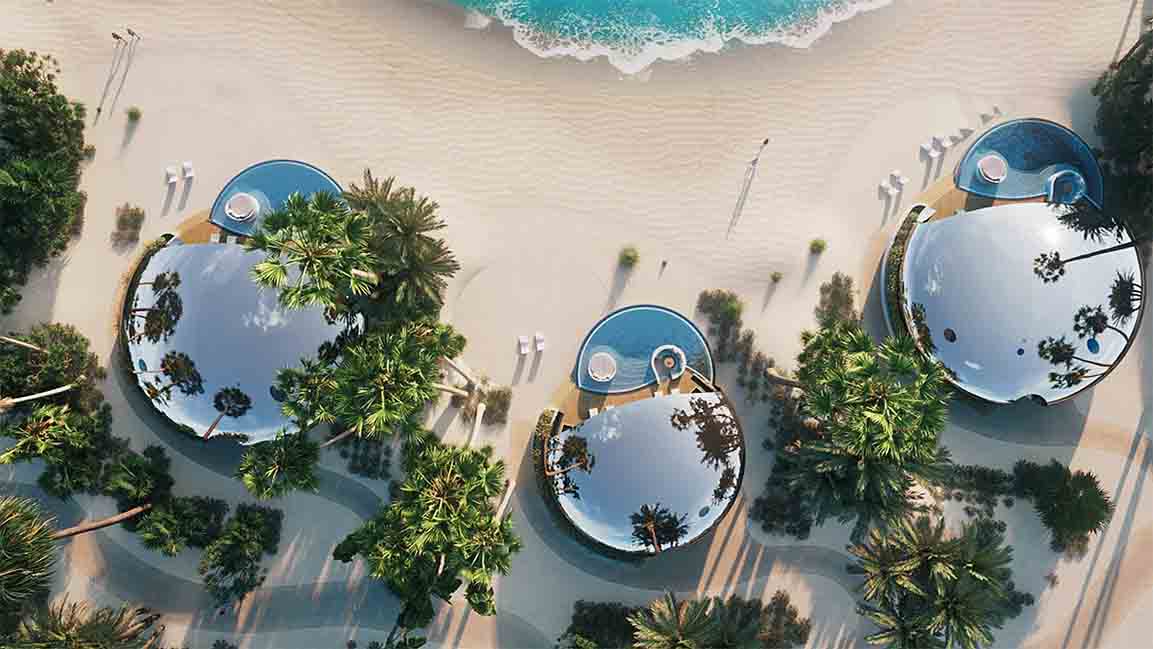- | G42
How data centers in the Middle East are prioritizing sustainability
Data storage is one of the biggest emitters of CO2, but Khazna Data Centers (Khazna), a JV between G42 and e&, is addressing through cutting-edge technology in energy efficiency.

The growth of cloud computing, and as the tech industry rushes to incorporate generative AI into virtually everything – from email and search to food delivery apps, means the number of data centers will climb.
In the foreseeable future, hundreds of data centers will be built to keep up with customer demand every year. That’s a challenge for companies that aim to be carbon-negative and water positive. Even though technology keeps getting more efficient, data centers still use vast amounts of energy and water in evaporative cooling systems to keep equipment from overheating. Globally, the industry uses an estimated 200 terawatt-hours of electricity a year.
Large data centers using high-density computing power – are, perhaps, not the most likely places to find new approaches to sustainability, but of late, there seems to be a priority in addressing the issue – increase efficiency, offset the emissions, and use renewable energy. Many also incorporate green building principles, creating environmentally conscious infrastructures that prioritize energy efficiency and reduce environmental impact.
ENERGY EFFICIENCY AND GREEN BUILDINGS
Khazna thinks it has found the way forward in the Middle East – it is counting on clean energy and a new approach to building energy-efficient data centers.
“We focus on designing, building, and operating energy-efficient and sustainable data centers across the region,” says Hassan Alnaqbi, CEO Khazna Data Centers.
Khazna partnered with Emerge, a joint venture between Masdar and EDF, to develop a solar photovoltaic plant to provide renewable power for Khazna’s data center extension in Masdar City. Additionally, Khazna incorporates pre-cooling and free cooling methods whenever possible, reducing reliance on HVAC equipment and lowering carbon emissions.
As the UAE diversifies and fosters a digital economy, Khazna aims to develop facilities to cater to the increasing demand for advanced digital infrastructure, supporting businesses in their digital resilience and transformation efforts and contributing to the growth of the UAE’s digital economy.
COLLABORATING FOR A GREENER FUTURE
Alnaqbi says Khazna is implementing strategies to achieve net-zero waste standards and certifications. Their “durable first” approach minimizes waste generation, focusing on reducing water consumption and implementing water reuse or recycling measures.
One notable advancement in Khazna’s new data centers is incorporating adiabatic-free cooling chilled water technology. This design ensures cooling efficiency even in harsh environmental conditions and temperature peaks. These adiabatic free cooling chillers offer higher capacity and substantial energy savings and operate with minimal noise.
In partnership with BEEAH Digital, Khazna will design, build and operate Sharjah’s first Tier 3 data center. This facility will optimize uptime and minimizes maintenance costs and energy consumption, providing a reliable and efficient data infrastructure for businesses in Sharjah.
Alnaqbi says, “We are also addressing climate change via energy management, implementing new cooling technologies, centralized monitoring systems, AI applications, using TSE (treated sewage effluent), utilizing less water for the cooling systems, applying renewable energy sources where possible and installation of high-efficiency equipment.”
SHAPING A GREENER DIGITAL LANDSCAPE
The future of data centers hinges on integrating sustainable practices into their operations. Alnaqbi believes upcoming data centers will prioritize green building principles, utilizing environmentally friendly construction materials, efficient insulation techniques, and maximizing natural lighting sources.
In the pursuit of enhanced energy efficiency and improved air quality, future data centers may incorporate green spaces or vertical gardens within their structures. These sustainable strategies optimize resource utilization and minimize environmental impact while meeting computing demands.
Green data centers also prioritize modular and energy-efficient principles, employing innovative methods such as green power, water reclamation, zero water cooling, recycling, and upgraded power sources. By implementing these practices, data centers achieve optimal energy efficiency and sustainability. Additionally, Edge computing reduces energy consumption and environmental impact by processing data closer to its source. Smaller, localized data centers can be established, contributing to a more sustainable infrastructure.
By adopting these strategies, future data centers can lead the transition towards a blend of sustainability and efficiency, forging a path toward a greener and more environmentally conscious digital infrastructure.









































